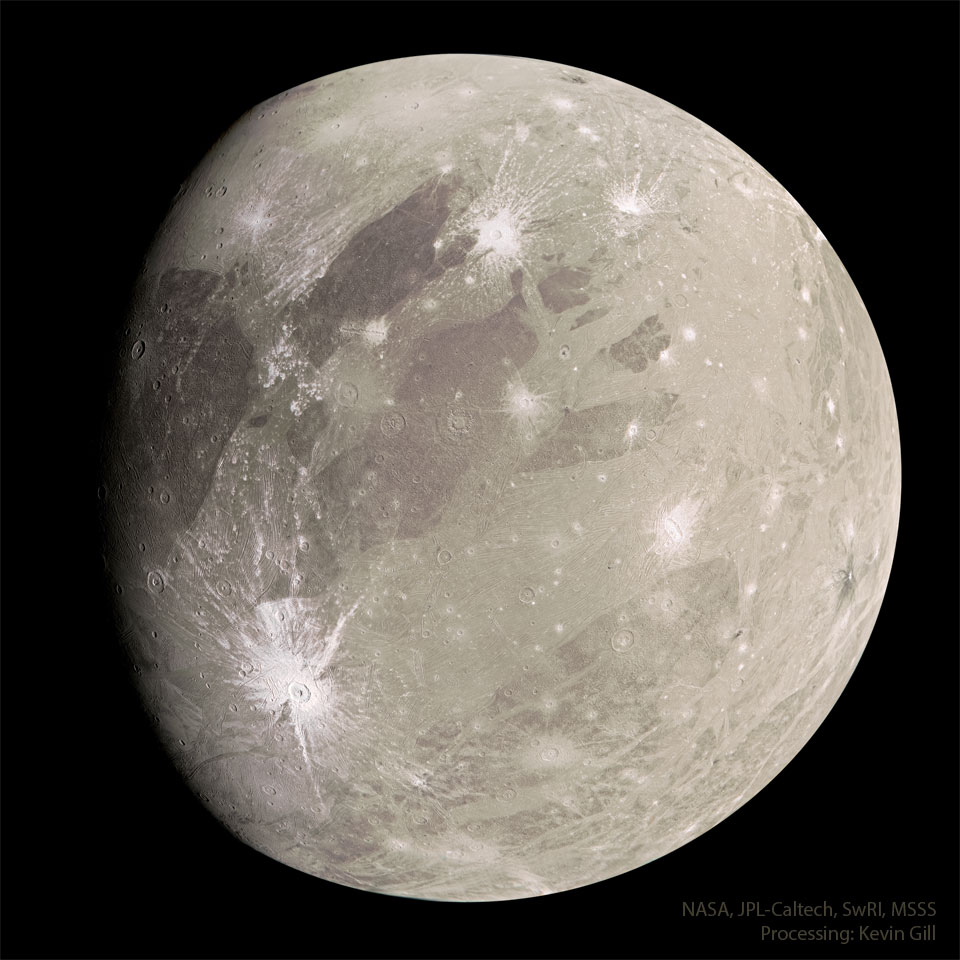2023年11月28日
Ganymede from Juno
Image Credit & Copyright: NASA/JPL-Caltech/SwRI/MSSS; Processing & License: Kevin M. Gill;
Explanation: What does the largest moon in the Solar System look like? Jupiter‘s moon Ganymede, larger than even Mercury and Pluto, has an icy surface speckled with bright young craters overlying a mixture of older, darker, more cratered terrain laced with grooves and ridges. The cause of the grooved terrain remains a topic of research, with a leading hypothesis relating it to shifting ice plates. Ganymede is thought to have an ocean layer that contains more water than Earth — and might contain life. Like Earth’s Moon, Ganymede keeps the same face towards its central planet, in this case Jupiter. The featured image was captured in 2021 by NASA’s robotic Juno spacecraft when it passed by the immense moon. The close pass reduced Juno’s orbital period around Jupiter from 53 days to 43 days. Juno continues to study the giant planet‘s high gravity, unusual magnetic field, and complex cloud structures.
Follow Podcasts about APOD’s Images: on YouTube
Tomorrow’s picture: double twister
朱诺号影像: 木卫三
影像提供与版权: NASA/JPL-Caltech/SwRI/MSSS; 影像处理与授权: Kevin M. Gill;
说明: 太阳系最大的卫星长什么模样?木星的卫星木卫三,个头甚至比水星及冥王星大;冰冷的表面则满是明亮的年轻撞击坑,其下叠着古老、黝黑、坑洼起伏的原野,并间杂着沟槽和山脊。沟槽地形的成因目前仍是研究的课题,主要的假说之一认为可能与冰板块的移动有关。木卫三咸信有个水量超过地球的海洋层,其中或许蕴藏着生命。与月亮类似,木卫三也是以同一面向着其中央行星─木星。这张主题影像,是由NASA的朱诺号机器人飞船,在2021年飞越这颗大卫星时所拍摄。经过这次近距离的飞越,朱诺号把绕行木星的轨道周期从53天缩短到43天。朱诺号将持续研究木星这颗巨行星的高重力、不寻常磁场及复杂的云层结构。
关注有关APOD图像的播客: 在YouTube上
明日的图片: double twister



